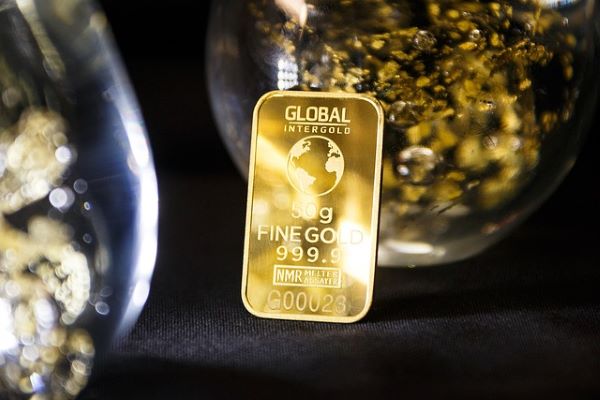Following the global financial crisis, central banks’ gold buying began accelerating; the banks collectively bought more than 3,700 tons of the precious metal between 2008 and 2017, with Russia and China contributing more than two-thirds of the purchases on a gross basis, according to the Official Monetary and Financial Institutions Forum.
By 2018, gold comprised roughly 10% of all central bank foreign exchange assets.
In the years since, government bonds have become less of a focus for numerous banks. Russia — and other countries — have instead opted to add physical gold to their reserves, says Kevin DeMeritt, founder and chairman of the Los Angeles-based precious metals firm Lear Capital.
“[It’s the] same thing with China; they’ve sold off U.S. Treasurys,” DeMeritt says. “They’ve been replacing that with gold.”
Central banks have continued to acquire considerable amounts of the precious metal. In October 2022, Lear Capital observed that central banks had been stockpiling gold. The banks ultimately obtained 152% more gold that year than in 2021, their highest purchasing level since 1950.
“Central banks entered the market in 2022,” DeMeritt says. “They purchased a quarter of all the mining supply, which is a huge jump from [their previous activity].”
Recent Gold-Related Activity
Central banks’ appetite for gold has yet to subside significantly. In 2023, central bank gold buying maintained “a breakneck pace” in 2023, according to the World Gold Council; on an annual basis, banks made their second-largest amount of gold purchases on record.
Banks have continued to buy in 2024. During the first quarter, 10 central banks that had at least a ton of gold in their reserves increased their holdings of the metal. The People’s Bank of China’s gold reserves grew for the 17th consecutive month, and the Reserve Bank of India added 19 tons of the precious metal — just a few more than the 16 tons it had purchased during the course of 2023.
According to data from the second quarter, Poland, India, and Turkey were some of the major gold buyers during the period. Also from Q2 2024, driven by a desire to diversify their portfolio, central banks’ gold purchasing rose year over year, the World Gold Council said, with banks buying 186 tons of the precious metal in the third quarter.
During that same Q3 2024 period, while central bank gold buying occurred at a somewhat slower pace, bank-related demand for the metal was strong; as of Oct. 30, central bank demand was at 694 tons, which the World Gold Council said corresponded to the level of demand during the same period in 2022. As in the previous quarter, the National Bank of Poland was the largest buyer again in the third quarter, purchasing 42 tons of gold for its reserves.
Although central banks have been robustly buying gold, with countries like Poland and Turkey logging in multiple months of increasing their reserves of the metal, central banks’ interest in selling the precious metal hasn’t seemed quite as pronounced.
Although some banks have sold gold — such as the Central Bank of Kazakhstan, which reduced its gold reserves by 5 tons in August 2024 — fewer have sold gold this year than have purchased it, according to the World Gold Council.
That type of voracious central bank gold buying can have a notable effect on the precious metals market, helping to fuel further demand. Keeping a large portion of gold in reserves, preventing it from flowing back into the market, can also influence gold demand and prices, according to Kevin DeMeritt.
“Around the world, central banks continue to buy more gold than we’ve seen since the early ’70s, and that has not stopped at all,” the Lear Capital founder says. “China continues to buy, Russia continues to buy, India continues to buy — and not at small levels. And those countries are not day traders. They buy [and] they hold for 10, 15, 20 years. They’re nervous about the [U.S.] dollar and its world reserve status.”
Also Read: Lear Capital Reviews: What It Really Costs To Enter the Gold Market
How Central Banks Feel About the Future
According to a survey the World Gold Council conducted involving 70 of the world’s central banks, banks don’t appear to be getting ready to ease their gold buying any time soon. More than 8 in 10 (81%), in fact, said in June they felt bank reserve managers would increase their gold holdings within the subsequent 12 months.
Reserve managers who participated in the survey attributed their interest in adding gold to their reserves to factors such as its ability to help mitigate risk amid global political and economic uncertainty, the precious metal’s long-term value, its performance during crises, and potential to diversify a portfolio effectively.
As the World Gold Council noted, in addition to central banks in emerging markets and developing economies, which have shown an interest in building out their portfolios via gold acquisition, central banks in advanced economies now also perceive gold in a more positive light.
More than half (57%) of central banks in advanced economies anticipate gold will account for a higher proportion of banks’ reserves five years from now; in 2023, only 38% of the survey respondents felt that way.
More than half — 56% — of respondents from advanced economies also said they feel central banks’ U.S. dollar-related reserves will decline, a 10 percentage point increase from 2023.
A growing interest globally in moving away from the U.S. dollar — in addition to conflicts outside of the country and other elements — could also continue to inspire individual investors to add more gold to their portfolios in the coming months, Lear Capital’s Kevin DeMeritt says.
“Gold is used to diversify during recessions, market volatility, and war,” he says. “When investors are worried about the economy, usually you get more people turning to gold, which can drive up its price. Diversification usually works out much, much better over the long term than a put-one-egg-in-your-basket-and-watch-it-closely mindset.”


